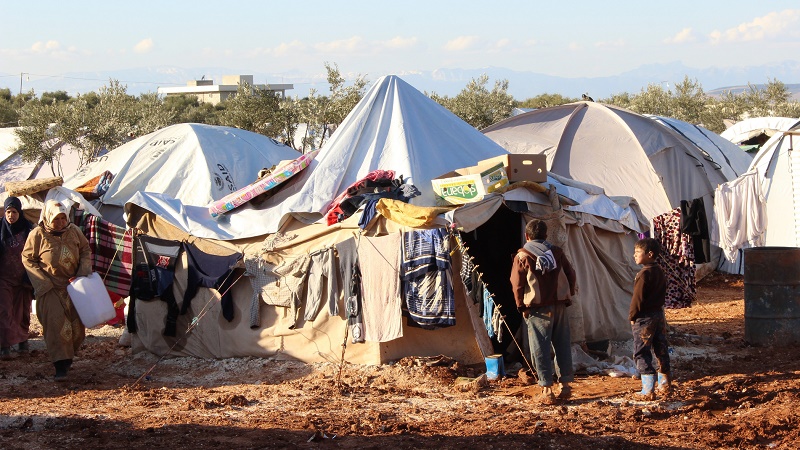The impacts of environmental degradation and climate change are not just local, nor do the effects of poverty, injustice and vulnerability remain within national borders.
This is a recent finding. While degradation, poverty, vulnerability have been a constant in human history, we have recently for the first time collectively decided to tackle them and not to leave anyone behind.
2015 has been a very positive year at the international level for commitment to action on climate, food security, the reduction of inequalities and access for all to energy, education, health and social protection.
Now, to implement this transformational agenda, we need to enhance domestic action.
But we also start to wonder to what extent is the international community able to orchestrate a shared response to the challenges faced by the most vulnerable, complementing the responsibility of national authorities towards their societies.
Report: UN climate officials release negotiation plan through 2018
The shift to sustainable economies and societies will not be possible without a sound and just foundation. Paying attention to the most vulnerable – including those vulnerable to the transition itself – is an objective per se, a moral imperative.
It is also a necessary condition to achieve low-carbon and resilient societies and economies, able to provide prosperity for all within the planetary boundaries.
If we want to address the needs of the most vulnerable, we cannot just rely on technology, innovations or markets to drive change.
Governments have an opportunity to guide the change in the smartest possible way, defining strategies to accompany the most vulnerable, to anticipate their needs.
From brown to green
Attention needs to be paid to those who will be seriously affected by the shift to a new economy, potentially impacted by unemployment due to the reconversion of economic activities.
The shift from “brown” to “green” industries goes along with the need to anticipate the reconversion of territories where old industries constitute a significant share of jobs and activities.
Support mechanisms to address potential unemployment and transition processes in affected regions have to be prepared. Building a new project for the future of these regions and reinvesting in it is a huge and top priority challenge for governments.
This reconversion remains a difficult task, as even rich countries committed to their energy transition are struggling to achieve it. Solutions need to be explored and this challenge requires the involvement of local stakeholders.
Knowledge networks
Moreover, there is an increasing awareness regarding the impacts of environmental policy instruments on social equity.
This applies to ecological taxes, but also to choices in terms of access to benefits of ecosystem services and distribution of costs associated to their degradation.
Large hydroelectric dams, air pollution due to transport or industry emissions are good examples of the difference in the allocation of benefits and costs.
Governments must take into account the conflicts observed in the past, when implementing the first generation of sustainable development policies and initiatives.
Some have already learned from the past, and started to implement a new generation of policies, for example, accompanying ecological taxes by compensation schemes for the poorest or investments to provide them access to services.
This experience and knowledge should now be shared across countries.
Even if mitigated, we know that environmental degradation will severely impact millions of people, through sudden disruptions and crises or through gradual changes and associated threats.
For example, even if we are successful in limiting the increase in global average temperature to 2C (hopefully, on the way to 1.5C), this is likely to raise by 25 per cent the number of people affected by heatwaves, droughts or river flooding in West Africa.
Hence the need to address the root causes of extreme vulnerability through economic and social development, and to better anticipate and react to these environmental crises. Since such crises are global in origin, they should be tackled by the global community.
Some initiatives are encouraging, for example, the global adaptation goal framework initiated at COP21, and the Sendai framework on Disaster Risk Reduction that is making progress in post-event reconstruction standards, early warning systems and insurance mechanisms.
But there is a need to reinforce and better combine these efforts in order to improve the efficiency of humanitarian responses, the management of internal and international migrations and the guarantees of the migrants’ human rights.
And, again, such initiatives must be integrated in a comprehensive and anticipatory outlook.
Nationally and internationally, vulnerability can and must be anticipated. Responses to it must be integrated in policy approaches. The international community has the responsibility to support and supplement national efforts.
Protecting the most vulnerable from the downside of positive transition is a great political challenge for the decades to come. Building a shared international response is an even greater one.
Teresa Ribera is Director of the Institute for sustainable development and international relations (IDDRI). Michael Zammit Cutajar is former Executive Secretary of the United Nations Framework Convention on Climate Change (UNFCCC) and an advisor to IDDRI.
